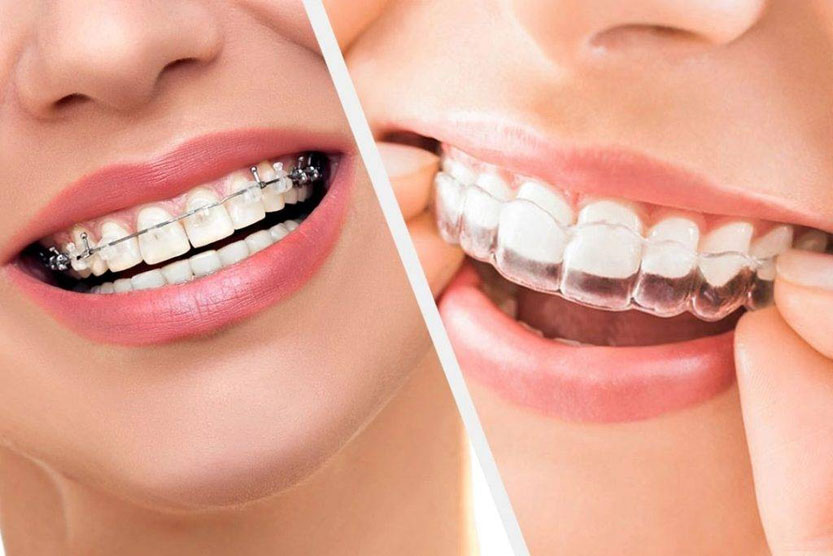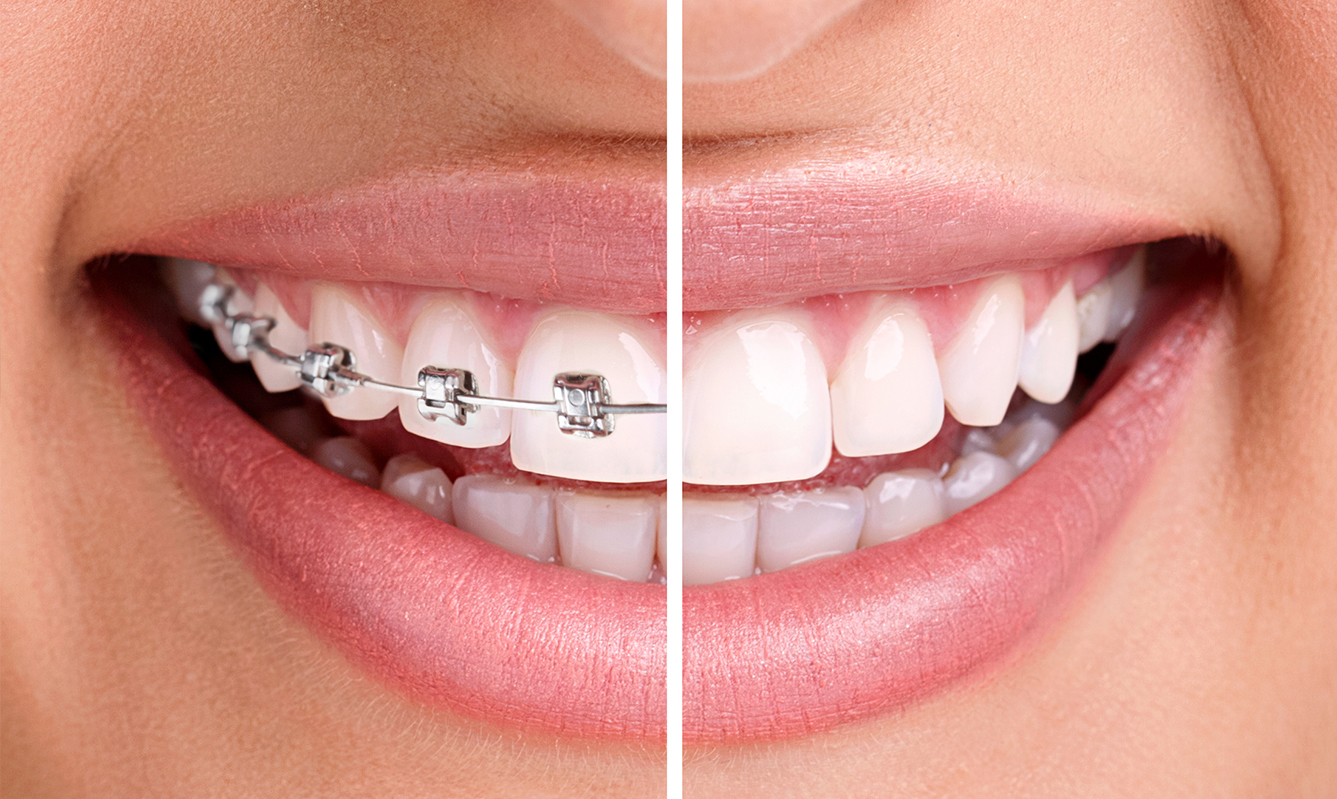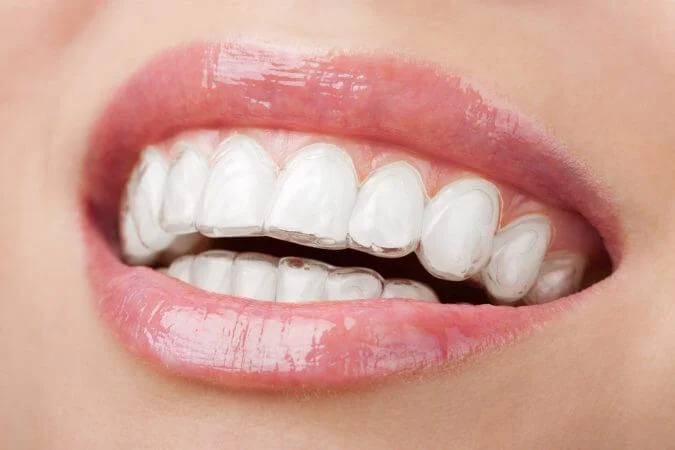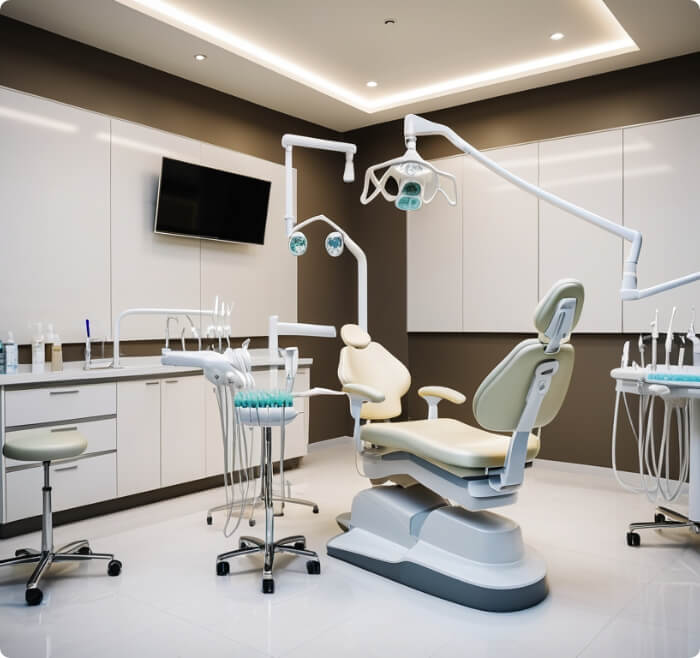Braces vs. Clear Aligners: What's the Difference?
Dates: 2025-01-10
View:
When it comes to teeth straightening, two of the most popular options are traditional metal braces and clear aligners. Both of these methods can help you achieve a beautiful, straight smile, but they work in different ways. In this article, we'll explore the main differences between metal braces and clear aligners to help you decide which option is best for you.

1. What Are Metal Braces?
Metal braces are the most traditional form of orthodontic treatment. They consist of small metal brackets attached to your teeth, connected by a wire. The wire applies gentle pressure on your teeth, gradually moving them into the desired position. Metal braces are often recommended for more complex orthodontic issues.

Pros of Metal Braces:
Effective for Severe Cases: Metal braces are highly effective for correcting a wide range of dental problems, including crooked teeth, bite issues, and jaw alignment problems.
Durable: They are strong and can handle even the toughest cases.
Affordable: Traditional braces are generally more affordable than clear aligners.
Cons of Metal Braces:
Visible: One of the biggest downsides is that metal braces are quite noticeable, which may make some people feel self-conscious.
Discomfort: The brackets and wires can cause discomfort, especially after adjustments.
Maintenance: You must avoid certain foods and be extra careful about brushing and flossing to prevent damage or plaque buildup.
2. What Are Clear Aligners?
Clear aligners are a modern alternative to traditional braces. They are made of transparent plastic trays that fit over your teeth and gradually shift them into the correct position. You can remove the aligners when eating or brushing your teeth, making them more convenient than metal braces.

Pros of Clear Aligners:
Discreet: Clear aligners are virtually invisible, making them a popular choice for adults and teenagers who are concerned about their appearance during treatment.
Removable: Since they can be removed, clear aligners allow you to eat and drink whatever you want without worrying about food getting stuck in the brackets.
Comfortable: Aligners are made from smooth plastic, which tends to be more comfortable than metal braces, with less irritation to the inside of your mouth.
Cons of Clear Aligners:
Not Suitable for Complex Cases: Clear aligners are generally best for mild to moderate orthodontic issues. They may not be effective for more severe problems, which may require traditional metal braces.
Discipline Required: You must wear clear aligners for at least 20-22 hours a day for them to work. Failing to wear them consistently can delay treatment.
More Expensive: Clear aligners are usually more expensive than metal braces, depending on your treatment plan.
3. Which Option Is Right for You?
Choosing between metal braces and clear aligners depends on several factors, including the severity of your dental issues, your budget, and your lifestyle preferences.
For complex orthodontic problems: Metal braces may be the best choice, as they can handle more severe cases.
For mild to moderate cases or aesthetic concerns: Clear aligners are a great option if you're looking for a discreet, more comfortable treatment.
For more information on the latest dental equipment and how it can benefit your practice, visit www.yying-biotech.com for a comprehensive range of cutting-edge dental solutions. Embrace the future of dentistry today!

1. What Are Metal Braces?
Metal braces are the most traditional form of orthodontic treatment. They consist of small metal brackets attached to your teeth, connected by a wire. The wire applies gentle pressure on your teeth, gradually moving them into the desired position. Metal braces are often recommended for more complex orthodontic issues.

Pros of Metal Braces:
Effective for Severe Cases: Metal braces are highly effective for correcting a wide range of dental problems, including crooked teeth, bite issues, and jaw alignment problems.
Durable: They are strong and can handle even the toughest cases.
Affordable: Traditional braces are generally more affordable than clear aligners.
Cons of Metal Braces:
Visible: One of the biggest downsides is that metal braces are quite noticeable, which may make some people feel self-conscious.
Discomfort: The brackets and wires can cause discomfort, especially after adjustments.
Maintenance: You must avoid certain foods and be extra careful about brushing and flossing to prevent damage or plaque buildup.
2. What Are Clear Aligners?
Clear aligners are a modern alternative to traditional braces. They are made of transparent plastic trays that fit over your teeth and gradually shift them into the correct position. You can remove the aligners when eating or brushing your teeth, making them more convenient than metal braces.

Pros of Clear Aligners:
Discreet: Clear aligners are virtually invisible, making them a popular choice for adults and teenagers who are concerned about their appearance during treatment.
Removable: Since they can be removed, clear aligners allow you to eat and drink whatever you want without worrying about food getting stuck in the brackets.
Comfortable: Aligners are made from smooth plastic, which tends to be more comfortable than metal braces, with less irritation to the inside of your mouth.
Cons of Clear Aligners:
Not Suitable for Complex Cases: Clear aligners are generally best for mild to moderate orthodontic issues. They may not be effective for more severe problems, which may require traditional metal braces.
Discipline Required: You must wear clear aligners for at least 20-22 hours a day for them to work. Failing to wear them consistently can delay treatment.
More Expensive: Clear aligners are usually more expensive than metal braces, depending on your treatment plan.
3. Which Option Is Right for You?
Choosing between metal braces and clear aligners depends on several factors, including the severity of your dental issues, your budget, and your lifestyle preferences.
For complex orthodontic problems: Metal braces may be the best choice, as they can handle more severe cases.
For mild to moderate cases or aesthetic concerns: Clear aligners are a great option if you're looking for a discreet, more comfortable treatment.
For more information on the latest dental equipment and how it can benefit your practice, visit www.yying-biotech.com for a comprehensive range of cutting-edge dental solutions. Embrace the future of dentistry today!
Get A Quote
Connect With Us For Dental Equipment Needs
Send Us Your Request And We Will Get Back To You As Soon As Possible.




